I sat down at a fancy Italian restaurant on a hot dinner date when the waiter asked,

“Would you like to hear our specials?”
Of course!
The waiter confidently recited the specials, using words that I had no idea existed, and gave us a few minutes to decide what to order.
What the hell did he just say?
I continued to stare at the menu but still had no clue what each entree consisted of.
Why couldn’t they just say ‘Three meatballs with sauce on a tiny plate’? And why did that plate cost me $25?
I didn’t want to look cheap so I ate the food without complaints.
After dinner, the waiter recommended the most expensive dessert on the menu. My date said that sounded good and, of course, I ordered it for the both of us.
Thanks a lot, Mr. Waiter.
My check came out to be over $100 and I wished I would have just gone to a taqueria instead.
Every day restaurants use basic psychology to manipulate customers (like myself) to spend and eat more than we need to. I never realized exactly how they did it until I found Neil Eisenberg’s answer on Quora.
I’ll let him take it away.
1. Words like “slow-cooked” and “handcrafted” are overused
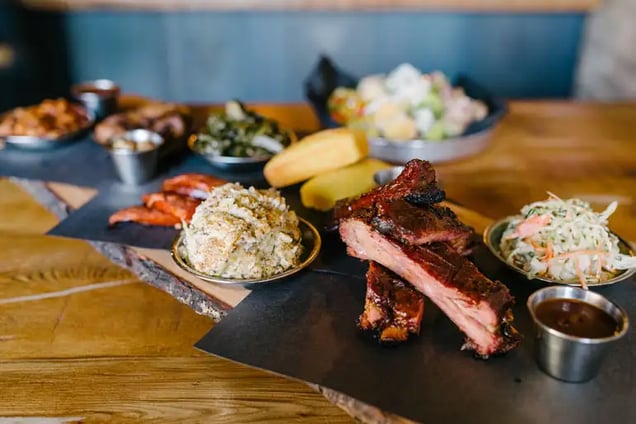
Source: Branding & Buzzing
Restaurants use particularly imaginative language to make menu items more appealing. Descriptive labels will generally increase sales by as much as 27% compared to foods without, according to a Cornell University study.
Some recognizable descriptions are “handcrafted, triple-basted, slow-cooked, golden-brown, hand-selected, fresh from the oven”, all of which bring the diner closer to the sensory experience the restaurant wants to impart.
2. There’s a reason why taquerias have so many photos in their menu
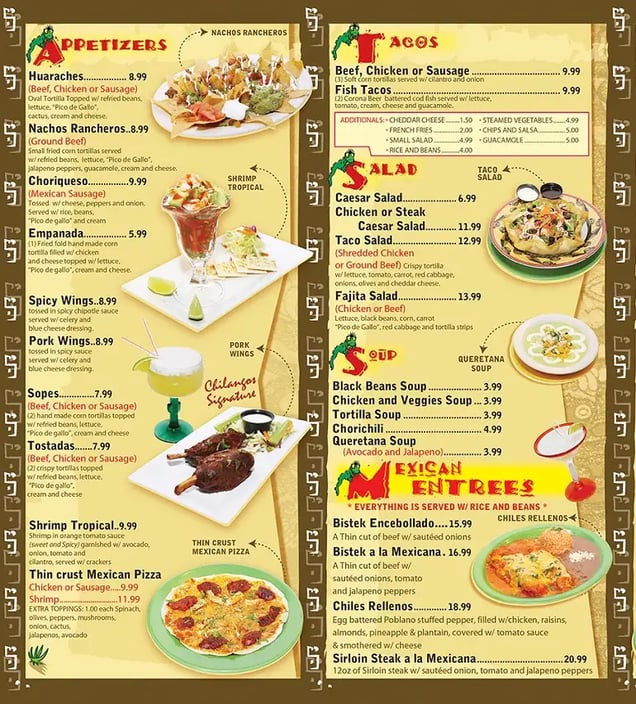
Source: Chilangos NJ
Restaurants use photographs to entice diners to purchase specific menu items. An attractive picture alongside any food tends to increase sales of that item by as much as 30%.
3. The most successful restaurants limit your choices
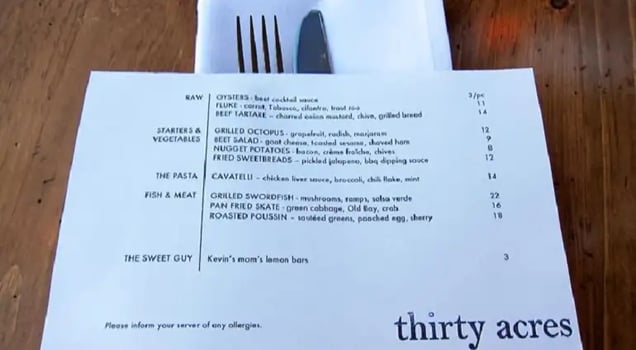
Source: Fine Dining Lovers
Restaurants will limit your choices by featuring tapas or fixed menus. In essence, they remove the responsibility people feel when choosing what to eat.
It is psychologically more effective for restaurants to limit their selection to six menu items per category in fast-food restaurants, and seven to ten menu items per category in fine dining establishments.
4. Every successful restaurant uses the same menu layout
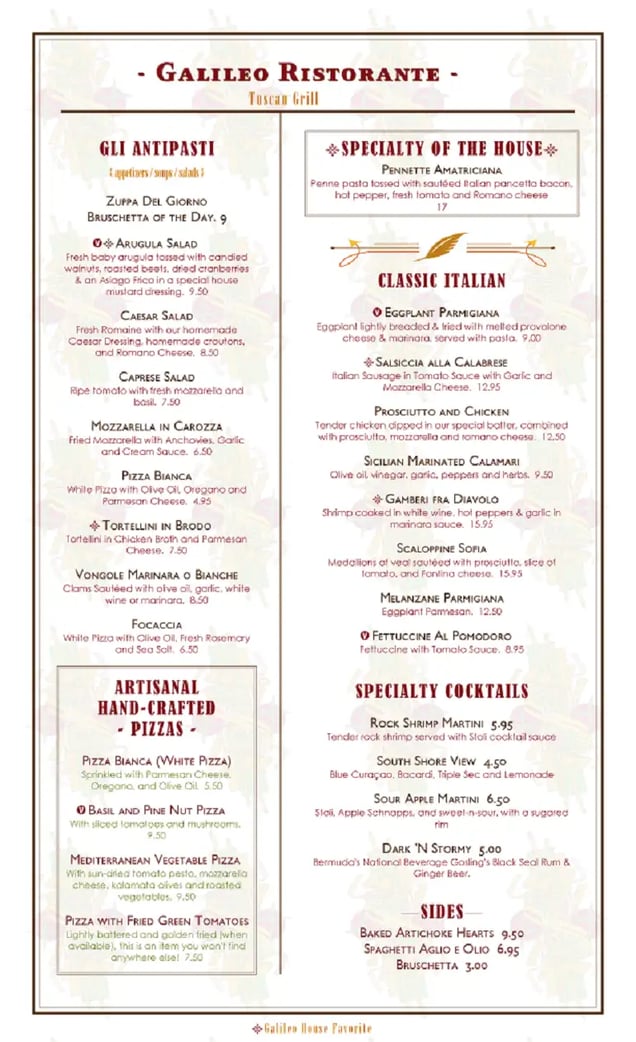
Source: Soft cafe
Restaurants design their menus with the same attention to detail as they prepare your food.
The upper right corner is prime real estate. It is where your eyes will go on a blank sheet of paper or in a magazine. That is exactly where the most lucrative items will be placed. From the top right your eyes will normally shift to the top left, which is where the appetizers will be. Just under the appetizers, you will find salads.
Another trick is to create blank space around high-profit items by placing them in boxes or separating them from the rest of the options. Placing “negative” space around any food calls attention to it and promotes sales.
5. Expensive dishes belong at the top of the menu
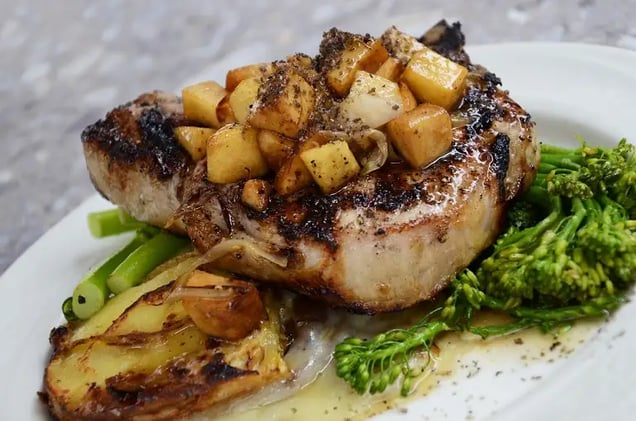
Restaurants scrutinize your reading patterns and consider scan-paths, which are a series of eye fixations that can be studied to see how people read certain things.
According to research conducted at Cornell University, a third of all diners are likely to order the first item their eye is drawn to. As a result, restaurants will put their more profitable items in the upper-right corner. This strategy is based on the primacy effect, which is that people remember the items at the beginning of a list best.
Another reason this works is that seeing a really expensive dish at first glance will make the rest of the menu seem reasonably priced by comparison.
Restaurants place their main focus on the entrees. According to research, most diners scan the entire menu like a book but focus most of their attention on the entrees.
6. There’s a reason why they sometimes have needlessly expensive items.
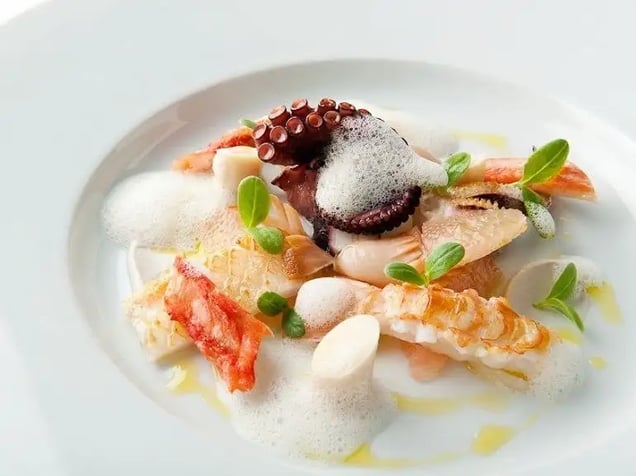
Source: Brooklyn Fare
Restaurants use expensive items to draw you to the cheaper items. The high-priced foods act as decoys. The rationale being, you probably won’t buy it, but you’ll find something cheaper since it will look more reasonable.
7. A fancy font makes your food feel more special

Source: VeryFirstTo
Restaurants will visually highlight foods in bold, colored, or fancier typeface, accompanied with photographs or singled out in a box, as they will appear more special. However, extremely high-end restaurants tend to avoid this strategy because it will make them look “tasteless”, no pun intended.
8. Restaurants know a single number gives a friendlier feel to your wallet
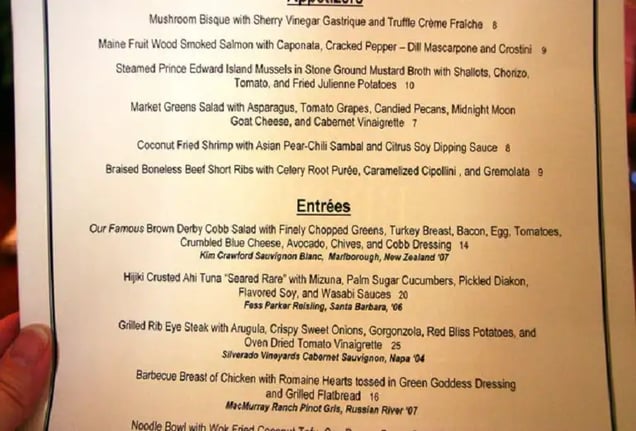
Source: FLICKR/ELIZABETH
Restaurants are very tricky with their numbers. Menu designers (yes, there are people who actually make a living as menu designers) know that prices ending in 9, such as $9.99, tend to signify value, but not quality. As a result, more prices now end in .95 instead of .99 because they have a “friendlier” feel.
More and more restaurants are pricing menu items without any cents whatsoever because it makes the menu cleaner, simpler, and easier to read.
9. Restaurants try their best to make you not think about money
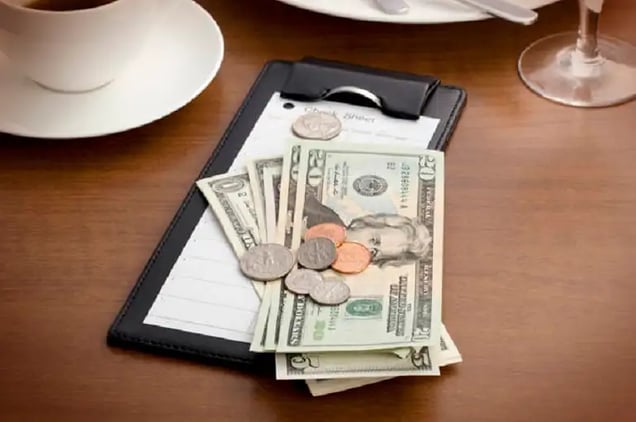
Source: Studiocasper
Restaurants don’t use dollar signs. A dollar sign is one of the top things restaurants now avoid because it immediately reminds diners that they are spending money.
According to Cornell University, guests who are issued a menu without dollar signs spend significantly more than those who receive a menu with dollar signs.
10. Eating Auntie Anne’s Pretzels makes people feel like they’re eating food from their family
Source: Auntie Anne’s
Restaurants connect food to family members. Diners are especially drawn to relational names, such as grandma, aunt and grandparents. As an example, people are more likely to buy Grandma’s Warm Homemade Cookies or Aunt Clara’s Famous Apple Pie. Names can also add a hint of nostalgia for diners.
11. The colors of the restaurant enhance the food people eat
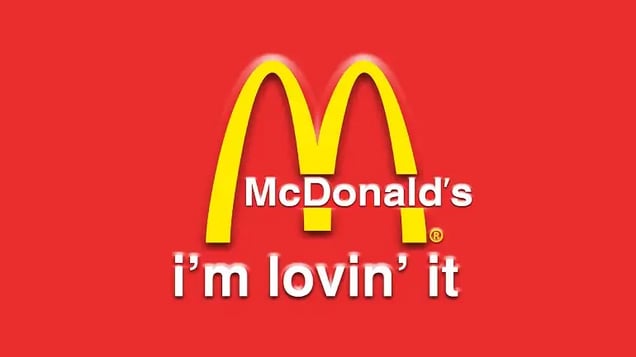
Source: Tumblr
Yellow is an irritating color that makes people want to leave. Yellow is commonly used in fast food restaurants. Red is a stimulant and draws attention. Red stimulates the appetite and subliminally makes people eat more. McDonald’s, Burger King, In-N-Out Burger, and El Pollo Loco use yellow and red in their branding logos. Why? Because they want you to A) order a ton of food, and B) leave immediately to make room for more guests.
Green is a relaxing color. People associate green with nature and feel more comfortable. Painting an eatery green is a good idea for formal and expensive sit-down restaurants, as well as café’s like Starbucks, which encourage patrons to stay and purchase more.
12. Try your best to ignore everything nearby
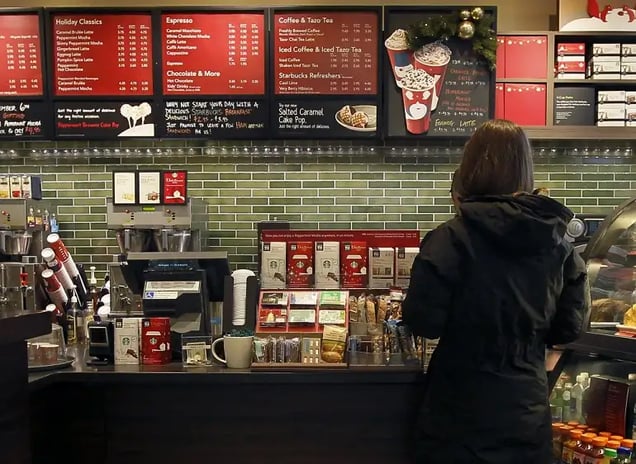
Source: Charles Rex Arbogast/AP
The closer you are to something, the more likely you are to buy it. Areas close to fast food registers are filled with impulse items. Starbucks is the king of impulse items that cost you $1.00 or less.
13. “Would you like your fries supersized?”
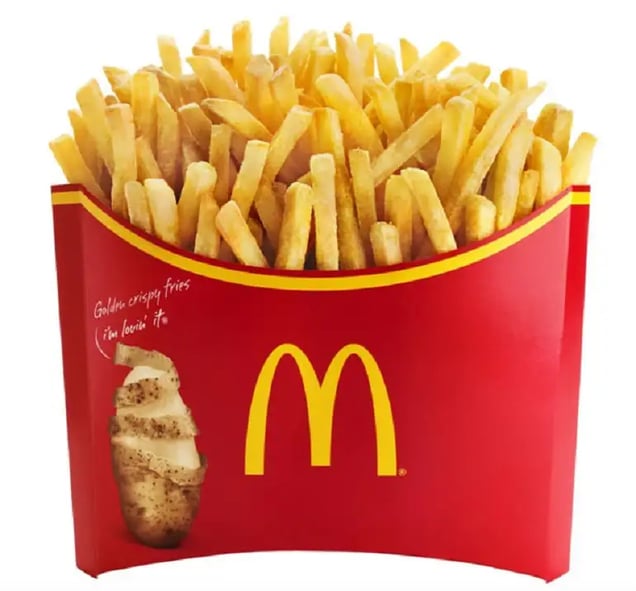
Supersized fries in Japan Source: nlab itmedia
More choices create an impetus to spend more. Fast food restaurants used to offer one standard meal size a few years ago. Today these chains offer an array of sizes so people who tend to buy a “large” shifted to pricier “super” sizes. Paying $1.00 and more for a larger soda and fries seems like a no-brainer to most people.
14. Restaurants strategically offer their specials verbally
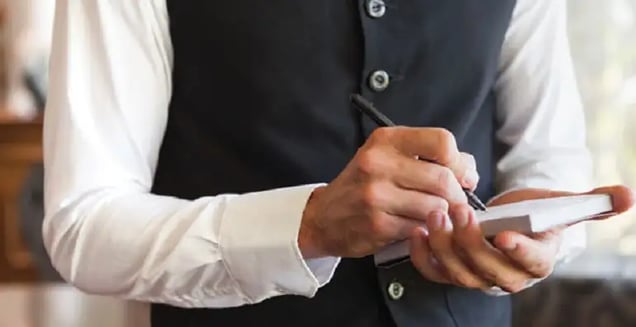
Source: Shutterstock
Daily restaurant specials are almost always offered verbally. Fine dining establishments know that people don’t want to appear cheap by asking for prices. They also know that statistically, men on a date are more likely to accept a server’s offer for expensive wine, dessert, or après dinner drinks.
15. The future of dining out is only getting more advanced.
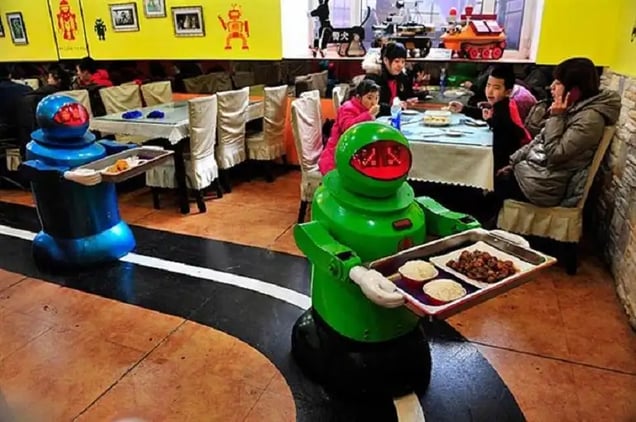
People with attitude Source: Asia Town
What’s on the horizon? In the future, drive-through menu boards will be able to read your mind. Or at least predict your particular tastes. Digital menu boards will soon feature items based on the particular customer.
The tailored menu will be possible with the help of your mobile app, which can help companies keep track of what you order. Starbucks says email offers to their customers (with its app) are tailored based on past purchases, and Sonic’s new digital menu board is scheduled for sometime in 2015.
Read this post before you go out to eat and see how many psychological ploys you can spot. Thank you, Neil Eisenberg!
